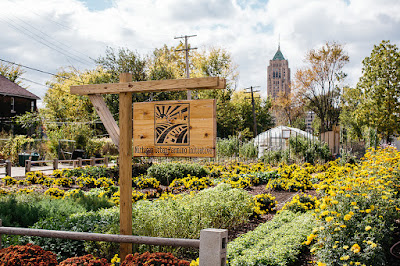An �agrihood� in Detroit (an exemplum of the agroecological utopian praxis of �democratization from below�)

A FB friend shared this encouraging news item on inhabitat from last year about the Michigan Urban Farming Initiative: � America�s first urban �agrihood� feeds 2,000 households for free :� �When you think of Detroit, �sustainable� and �agriculture� may not be the first two words that you think of. But a new urban agrihood debuted by The Michigan Urban Farming Initiative (MUFI) might change your mind. The three-acre development boasts a two-acre garden, a fruit orchard with 200 trees, and a sensory garden for kids. If you need a refresher on the definition of agrihood, MUFI describes it as an alternative neighborhood growth model. An agrihood centers around urban agriculture, and MUFI offers fresh, local produce to around 2,000 households for free.� From MUFI�s website : �The Michigan Urban Farming Initiative is a 501(c)(3) nonprofit organization that seeks to engage members of the Michigan community in sustainable agriculture. We believe that challenges unique to the Michigan community


